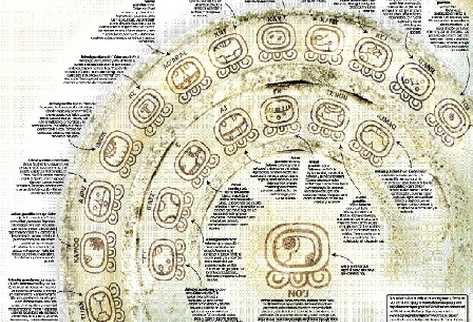

Washington, DC: Dumbarton Oaks Research Library and Collection.ĭavletshin, Albert. Elizabeth Hill Boone and Gary Urton, 379–390. “The Cultural Category of Scripts, Signs, and Pictographies.” In Their Way of Writing: Scripts, Signs, and Pictographies in Pre-Columbian America, ed. See Mikulska and Offner 2019, Davletshin 2021, Whittaker 2021 for recent, contrasting points of view.īoone, Elizabeth Hill. See Houston, Stuart and Chinchilla 2001 for an anthology on the history of Maya decipherment. Some milestones are: Thompson 1950, Prem and Riese 1983, Justeson and Campbell 1984, Galarza 1996, Davletshin 2002, Lacadena 2008, Thouvenot 2010, Velásquez García 2010, Boone 2011, Whittaker 2011, Mikulska 2015, 2019, Zender 2017.
CUAL ES MI NAHUAL MAYA DOWNLOAD
Towards a Complex Theory of Writing – Alonso Zamora Download I hope readers enjoy it, despite its faults. Thus, this article was written as a bit of a prologue to further contributions. However, in the end, I am conscious that the most important thing is not the theoretical underpinnings (theory evolves, comes and goes), but concrete issues.

The article that I link in this entry certainly won’t solve the issue and is, in many ways, nothing essentially new (despite the presence of a couple of new analyses), but I felt compelled to write it after I realised that, in a way, it is possible to theoretically reconcile both of the major perspectives in the debate (which could be vaguely named “semasiography” and “grammatology”) if different theoretical referents are used, specially non-traditional linguistics. While the field of Maya epigraphy has tended towards convergence and a state of consensus regarding the fundamentals, non-Maya writing systems have been the centre of a heated debate that will previsible continue unabated in the coming years.

Ever since Ignace Gelb commited the double mistake of relegating both Aztec and Maya writing to the category of “limited systems” or “precursors of writing” (1963 : 51-59), scholars have extensively discussed on the nature of Mesoamerican writing systems, disagreeing more often than not. Among the Jacaltek, naguals reinforce indigenism by punishing those who collaborate with non-indigenous.In 1955, Gustavo Correa suggested Nagualism is not, arguing that it was wholly imported from Europe, where he compared it to the medieval belief in.The discussion regarding the definition of writing, and of what Mesoamerican systems can teach us about writing in general, is fascinating, difficult, and somewhat pricklish. He identified various beliefs associated with Nagualism in modern Mexican communities such as the, the, the and the.Subsequently, many studies have described Nagualism in different Mesoamerican cultures such as the and the. Nagualli are hired to remove curses cast by other nagualli.In other communities the accusation of Nagualism may result in violent attacks on the accused by the community.The Western study of was initiated by archaeologist, linguist, and ethnologist who published Nagualism: A Study in Native-American Folklore and History, which chronicled historical interpretations of the word and those who practiced Nagualism in Mexico in 1894. The community knows who is a nagual, tolerating, fearing and respecting them. In the god was the protector of Nagualism, because his tonal was the jaguar and he governed the distribution of wealth.In modern rural Mexico, nagual is sometimes synonymous with brujo ('wizard'): one who is able to shapeshift into an animal at night, (normally into a, a big, or ) drink blood from human victims, steal property, cause disease, and the like.In some indigenous communities the nagual is integrated into the religious hierarchy.


 0 kommentar(er)
0 kommentar(er)
